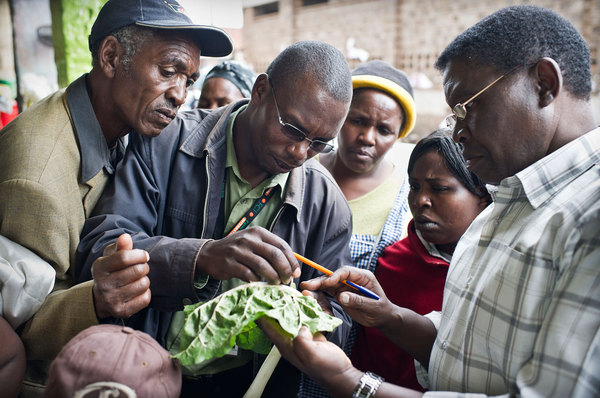Who are the world's small farmers?
It is commonly believed that there are around 500 million small farms – defined as being less than 2 hectares – in the world. The conventional wisdom is that the number of small farms is increasing whilst farm sizes are getting smaller, and this trend will continue for 20-30 years. However there is a paucity of…
The future of small farms in a rapidly changing world
On 24-25 January 2017, CABI and the Syngenta foundation for sustainable agriculture hosted a conference at the Syngenta conference centre in Basel, Switzerland. The conference, entitled “The Future of Small Farms”, covered a broad range of topics aimed at assessing the state of agricultural policy in developing economies and emerging markets, and its influence on…
New device can detect crop pathogens by smell
By Philippa Merry. Reblogged from The Courier. Dubbed an E-Nose, the equipment has been developed by engineers and scientists to detect crop pathogens by smell weeks before any infection becomes outwardly apparent or evident on any visual basis. “It’s an amazing tool for early detection,” commented Kit Franklin, a lecturer of agricultural engineering at Harper…
BioClay pesticide spray successful in recent trials
Australian researchers have developed a new nanotechnology pesticide spray called BioClay which has shown success in recent trials. Developed by the Queensland Alliance for Agriculture and Food Innovation (QAAFI) and the Australian Institute for Bioengineering and Nanotechnology (AIBN), BioClay contains double stranded RNA which can be sprayed onto a crop. When the RNA contacts the…
Agriculture and food security — where are we headed in 2017?
By Lisa Cornish. Reblogged from DEVEX. As climate change impacts the global ability to grow food, both in quality and quantity, researchers in agriculture have become an important asset for establishing long-term food security as the world’s population continues to increase. In December, agriculture and food security researchers visited Canberra for high-level discussions on development…
Zambia Battles Armyworms That Are Decimating Corn Fields
By Matthew Hill and Taonga Clifford Mitimingi. Reblogged from Bloomberg Markets. Zambia must intensify its fight against an outbreak of armyworms that’s wiping out fields of the staple corn crop, posing a threat to the southern African nation’s food security, Vice President Inonge Wina said. “They are posing a big threat to food security in…
Sharing experiences of mitigating the impacts of Tuta absoluta
Contributed by Kritika Babbar, CABI India Climate change has emerged as one of the most important environmental, social and economic issues today – especially for South Asia, which is highly impacted by these changes. In light of this, an international conference on Biodiversity, Climate Change Assessment and Impacts on Livelihood (ICBCL) was convened in Kathmandu…
Myanmar Plantwise Welcomes CABI Board Member
Contributed by Dr Sivapragasam Annamalai, CABI Paulus Verschuren, a CABI Board member, recently visited Myanmar, accompanied by CABI staff, associates and representatives of the Ministry of Agriculture and Irrigation. His motivation for the trip was “to get out and learn in the field what Plantwise means to farmers and other stakeholders”. The brief but busy…
Our favourite recipes – Caribbean
For the final post of our mini-series, “Our favourite recipes”, this Tomato Choka recipe has been kindly provided by Bob Ramnanan, CABI Country Coordinator for the Caribbean. Tomato Choka is a quick and easy meal vegetarian meal and can be served with sada roti (flatbread), rice, pasta or potato.
Pakistan’s papaya pest squashed through biocontrol
By Saleem Shaikh. Reblogged from SciDev.Net A severe infestation of the papaya mealybug (Paracoccus marginatus) nearly wiped out papaya orchards in Pakistan before the largely farmed country decided to replace conventional chemical pesticides that were ineffective with natural predators that proved to be successful. The system was developed by agro-biotechnologists and entomologists at the Pakistani chapter…


